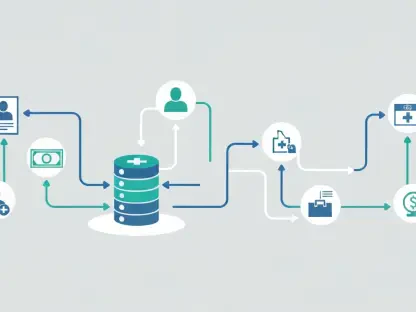On July 19, 2024, the world witnessed a massive IT outage unprecedented in scope and impact. A single faulty software update from CrowdStrike’s Falcon Sensor security software wreaked havoc across various sectors globally. This digital calamity interrupted the daily operations of airlines, media outlets, banks, and retailers, predominantly affecting businesses reliant on Microsoft Windows operating systems. But how did one software bug lead to the biggest IT outage in history?
The Catalyst: CrowdStrike’s Faulty Update
Unpacking the Software Bug
The incident originated from a software update to CrowdStrike’s Falcon Sensor, crucial cybersecurity software deployed widely across systems running on Microsoft Windows. Users encountered the notorious “blue screen of death,” signaling severe system crashes. This bug disrupted not only individual users but also cascaded through institutional networks, crippling operations on a global scale. The defective update turned everyday digital interactions into significant operational nightmares, showcasing just how brittle our interconnected tech systems can be when faced with unexpected failures.
CrowdStrike’s Falcon Sensor, an otherwise reliable piece of cybersecurity software, became the single point of failure that paralyzed institutions worldwide. The cascading effect of the bug demonstrated how deeply integrated and interdependent modern IT ecosystems are. One flawed update quickly spiraled out of control, shutting down essential services and halting business processes, reflecting the high stakes involved in managing critical software updates. The blue screen of death was not just a user inconvenience but a symbol of extensive systemic collapse, demanding urgent intervention and reassessment of IT management practices.
Widespread Impact Across Sectors
The outage had immediate and far-reaching consequences. Airlines suffered flight delays and cancellations, cascading into a domino effect that disrupted global supply chains. Banks faced operational havoc as ATMs and online banking services went down, causing financial transactions to come to a standstill. Retailers and supermarkets, dependent on digital systems for transactions and inventory management, saw their operations grind to a halt. Media outlets, too, were not spared, as broadcasting systems experienced significant disruptions, highlighting the integral role of IT in contemporary operations. These sector-wide disruptions speak volumes about how reliant various industries are on seamless digital operations.
The chaos extended far beyond individual inconveniences, impacting the very fabric of global commerce and communication. Airports were scenes of frenzied travelers, unable to proceed due to grounded flights. Banks experienced overwhelming customer dissatisfaction as digital transactions and ATMs failed. Retailers struggled to manage everything from payment processing to supply chain logistics. Media outlets grappled with interrupted broadcasts, underscoring the comprehensive reach of IT in delivering news and entertainment. This multi-sector upheaval starkly illustrated the ripple effect a single IT outage can have, undermining trust in digital systems that the modern world heavily relies on.
Geopolitical Consequences of Technological Dependence
The Deliberate Insulation of China’s Infrastructure
While the outage painfully exposed vulnerabilities in countries dependent on Microsoft and CrowdStrike, China remained relatively unaffected. This stark contrast underscored the strategic value of developing indigenous technologies and reducing reliance on foreign tech. China’s insulated IT infrastructure emerged as a protective bulwark, sparing it from the chaos that engulfed other nations. The event has reignited discussions on the benefits of technological sovereignty and self-reliance, particularly in the realm of critical IT infrastructure.
China’s relatively unscathed position serves as a potent illustration of the dividends of investing in homegrown technologies, serving as a shield against the fallout experienced by other nations. This strategic insulation provided China with a significant advantage, highlighting the potential benefits of prioritizing domestic tech development. As global dependencies on multinational tech companies come under scrutiny, China’s approach offers valuable lessons in minimizing vulnerability through infrastructure fortification. The incident has revitalized global conversations around the importance of insulation versus integration in technological infrastructures.
Implications for National Security and Economic Stability
The incident shed light on broader geopolitical ramifications. As nations grapple with the fallout, the risks associated with technological dependencies have never been clearer. The need for diversified technology sources to bolster national security and economic stability has gained renewed urgency. Over-reliance on a single technology provider, as this incident demonstrated, can spell disaster on an unprecedented scale. This realization is prompting governments to reconsider their tech dependencies and explore more diversified alliances and partnerships.
The CrowdStrike update fiasco underscores the vital need for robust technological ecosystems that are resilient to singular points of failure. National security and economic stability are intricately linked to the reliability of IT infrastructures. This incident has catalyzed an urgent reevaluation of how countries can safeguard against similar disruptions in the future, through strategic diversification and investment in reliable, secure technologies. Policymakers are now pressed to implement measures that ensure not only the efficiency but also the resilience of national IT infrastructures, mitigating the risks posed by over-dependence on a single tech entity.
Lessons in IT Management and Recovery
The Critical Role of Disaster Recovery Strategies
Recovery efforts highlighted both strengths and weaknesses in existing disaster recovery strategies. Despite the rapid identification and rectification of the issue, the sluggish recovery process underscored the complexities of restoring service continuity in intricate digital ecosystems. Effective disaster recovery plans proved essential, yet discrepancies in their deployment revealed gaps that need addressing. The incident has prompted organizations to rethink their disaster recovery protocols, aiming for more resilient strategies capable of withstanding such unexpected crises.
This outage offered a real-world stress test of disaster recovery frameworks, revealing areas that need improvement. While some sectors displayed commendable recovery speeds, others lagged, pointing to inconsistencies in preparedness. Organizations are compelled to assess their recovery strategies meticulously, ensuring that they are comprehensive and adaptable to different scales and types of disruptions. The lessons drawn from this incident emphasize the importance of not just having a disaster recovery plan but continuously refining it to cover emerging vulnerabilities and complexities.
Necessity of Staggered Software Rollouts
This incident also underscored a fundamental lapse in IT management practices: the failure to employ staggered software rollouts. Past lessons from notable IT disasters pointed to the importance of gradual software updates. The absence of such a strategy exposed the fragility of systems presumed robust, urging a reconsideration of current practices. Deploying updates in stages could have localized the disruption, making it manageable and preventing the widespread chaos that ensued. This fundamental misstep has highlighted the critical importance of staggered rollouts in safeguarding global IT ecosystems.
Adopting staggered software rollouts can prevent a singular issue from becoming a widespread crisis by allowing organizations to catch and rectify errors early. This practice, recommended for years yet overlooked, proves its vital importance in maintaining IT integrity. By phasing updates, organizations can monitor results on a smaller scale before full deployment, enabling quicker identification and resolution of issues. This lesson drives home the need for meticulous planning and conservative approaches in software management to build more resilient and robust IT infrastructures capable of withstanding unforeseen challenges.
The Role of AI and Cybersecurity
The Readiness for AI Integration
A critical analysis emerged in the wake of the incident about our readiness for AI integration. If a single software bug can precipitate such widespread disruption, questions about our infrastructure’s preparedness for AI technologies loom large. The rush to integrate AI without foundational IT practices in place could lead to far-reaching consequences, as exemplified by this outage. It served as a powerful reminder that sophistication in AI should not come at the cost of neglecting core IT principles and practices essential for systemic stability.
The future of AI integration requires careful planning and robust foundational IT frameworks to support its complex functionalities. This incident calls for a reconsideration of how rapidly emerging technologies, like AI, are being deployed and integrated into existing systems. Ensuring the infrastructure is robust enough to handle these technologies is crucial to avoid catastrophic results. AI can bring immense benefits, but its integration must be done with caution, prioritizing stability and security to ensure that innovation doesn’t outpace our ability to manage and protect it effectively.
Ensuring Robust Cybersecurity Frameworks
On July 19, 2024, the world faced an unparalleled IT crisis due to an unprecedented software outage. A faulty update from CrowdStrike’s Falcon Sensor security software caused widespread chaos, impacting various sectors on a global scale. This digital catastrophe primarily disrupted the operations of airlines, media companies, banks, and retailers, especially those heavily dependent on Microsoft Windows operating systems. It was a single, erroneous software update that triggered the most significant IT outage in history.
Imagine the ripple effects: airports jammed with stranded passengers, news stations struggling to broadcast, financial institutions unable to process transactions, and retailers facing point-of-sale system failures. The ramifications were immediate and widespread, highlighting the vulnerabilities in our interconnected digital infrastructure.
The incident serves as a stark reminder of the critical importance of rigorous software testing and the potentially devastating consequences of oversight. It also underscores the interdependence of modern businesses on reliable cybersecurity measures and the tools designed to protect them.









